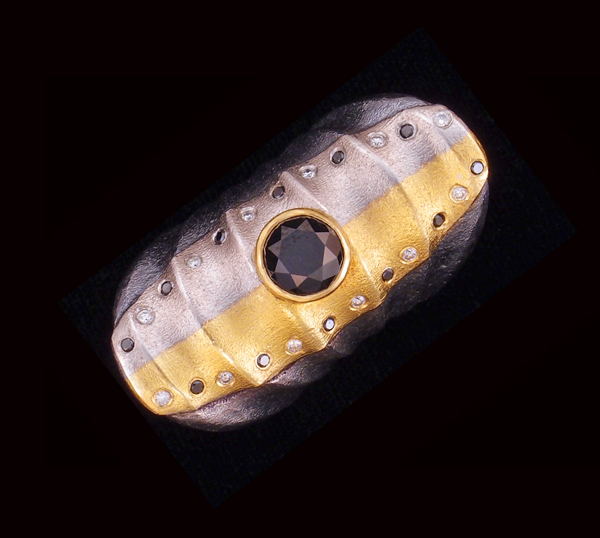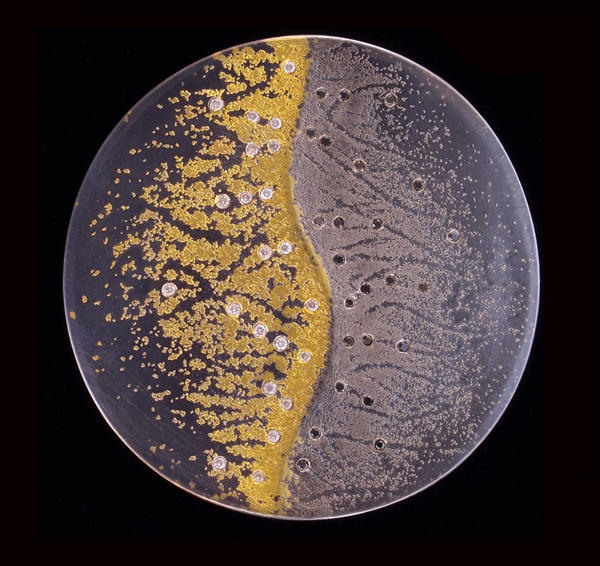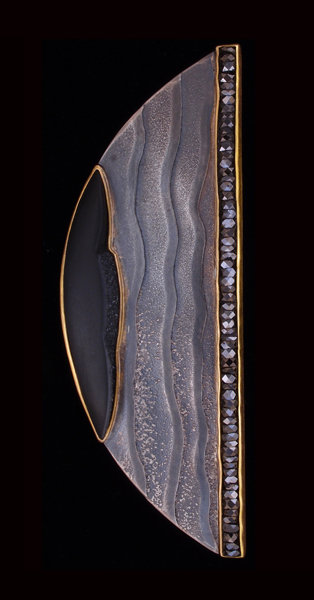
Susan Cummins: Peter, what is your role at Atelier Zobel?
Peter Schmid: I am the new face of Atelier Zobel. I worked for Atelier Zobel for 11 years before taking over the studio in 2005.
Please describe how the atelier works. How many people do you employ? What are their specialties?
Peter Schmid: Mathias Morgenstern started the year before I did, in 1993. We celebrated his twentieth anniversary this fall. Mathias is the leader of our workshop, an extremely talented goldsmith, and a great friend. It’s hard to think of our team as employees. It is more like family. We are a family of ten. Ten characters, including at least three divas, but I’m not naming any names. Everyone has his or her own flair.

As for cocktails, Jim has the “J. Cotter,” which I have had the pleasure of enjoying on a number of occasions. In the studio, our house drink at the moment is gin and tonic with a special gin distilled in the Black Forest called Monkey 47 and Gents tonic.
What is the story of your path to becoming a jeweler?
Peter Schmid: Actually, I was dying of boredom studying economics when I decided to switch to art. A friend of mine (Bea Buchmüller) mentioned that there were interesting things going on in Konstanz. I walked into Atelier Zobel in 1990 and stated I would be back in three years after school, and I would like to be an apprentice. The rest, as they say, is history. As the new face of Atelier Zobel, I aim to continue a great tradition in goldsmithing in our town and in the jewelry world.


What is your favorite part of the designing process?
Peter Schmid: It is to see the piece on the person. This is a magical moment when the piece comes to life!
What is the most beautiful piece of jewelry you have ever seen?
Peter Schmid: The Topkapi Treasure in the Topkapi Palace in Istanbul.
Who are your role models?
Peter Schmid: Our good friend Ping Fu reminds me to turn challenges into opportunities to grow and learn, not to accept fear, and not to make any excuses. Our friend Sally makes every moment magical. The late Alexander McQueen’s attitude towards beauty, structural yet poetic, and the small improvisations people make everyday that make life a little grander. I often take pictures of street art during my travels. I also look to architecture to try to redefine the relationship of object to the body. We just had a great tour of the Vitra campus by Weil am Rhein.
Can you describe the differences between fashion jewelry, traditional jewelry, or art jewelry? Where does your jewelry fall? Why?
Peter Schmid: It depends on how you define fashion. If you define fashions as trends, then fashion jewelry can be described as jewelry that is designed based on current trends in the fashion industry. Traditional jewelry is conservative. Art jewelry is about expressing an idea beyond the materials, form, and social norms. Because ultimately jewelry should be worn, a piece of jewelry works to express the personality of the wearer and to connect him or her to wider “tribal” or social circle.

Who do you think is an underrated jeweler?
Peter Schmid: Hyun-Seok Sim
This show has a short life of only four days. I noticed that it is your habit to do very short presentations. Why is that?
Peter Schmid: Well, I would love to stay longer, but I have a family, a team, and my own gallery in Germany.
What do you pride yourself on doing the very best?
Peter Schmid: Everything.
Is there a great book on jewelry you would like to recommend?
Peter Schmid: Can even a great book about jewelry inspire other jewelers, or does it just illustrate where we are in the field today? I would rather recommend Bend Don’t Break by Ping Fu.





